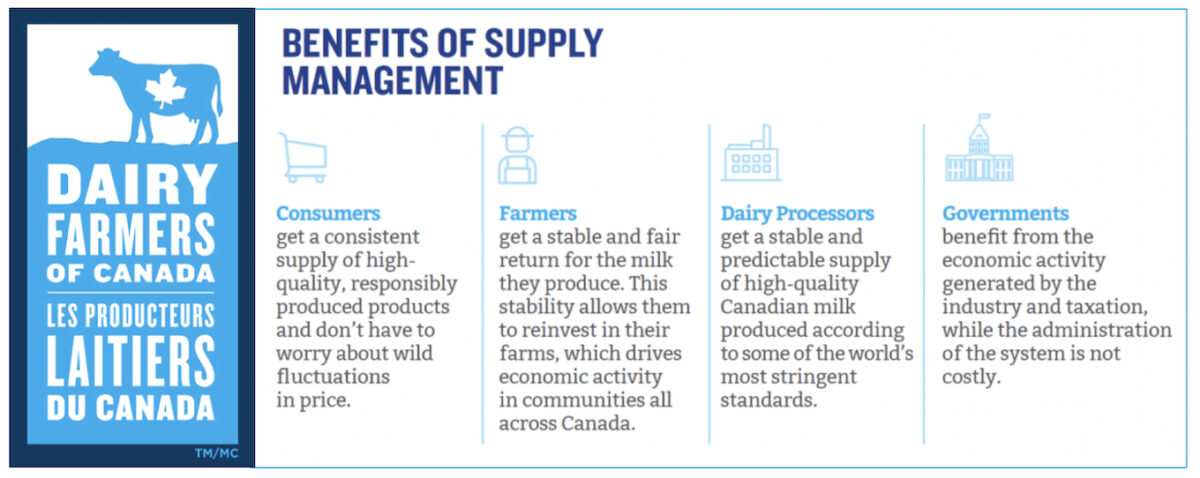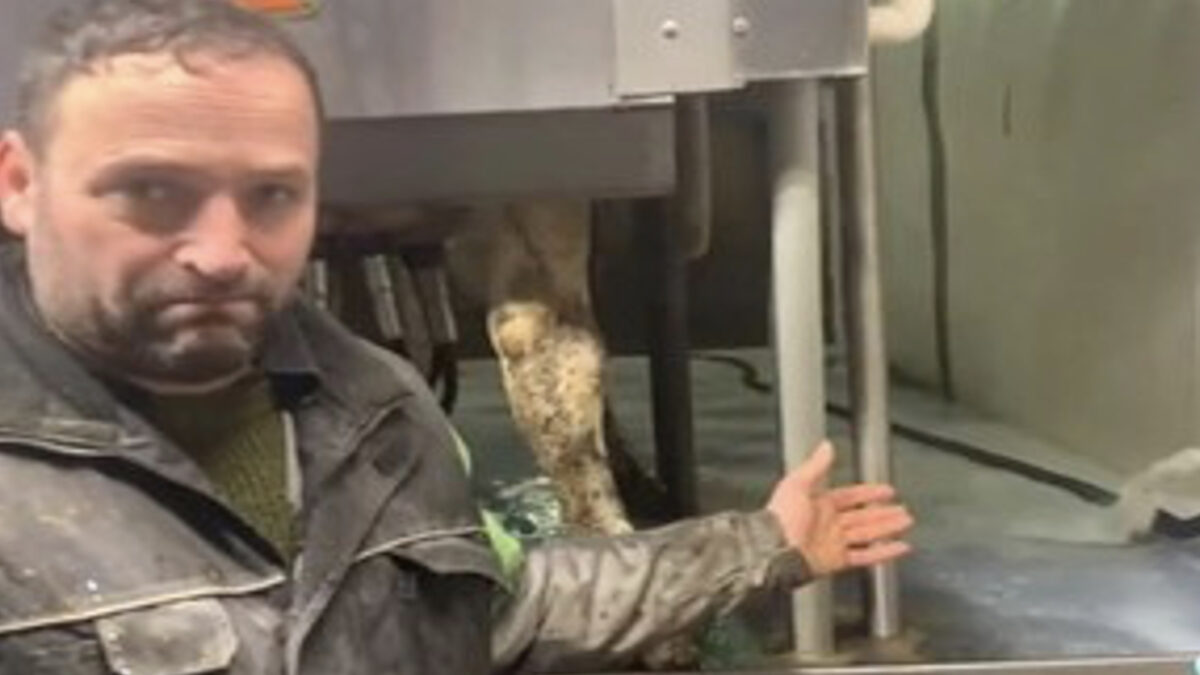In early February, Ontario dairy farmer Jerry Huigen posted a TikTok video showing how he was forced to dump 30,000 litres of milk because of supply management rules when he produced more than his operation’s January quota.
His post quickly went viral reaching more than 36 million views. Although it was later pulled from the platform, Huigen’s frustration over the dumped milk and his criticism of supply management sparked a national debate about milk quotas.
In the video, Huigen asked: “How do you guys dare to put this down in the market for $7 a litre when there’s a lot of single mothers with no extra money with a few kids to feed?
“We send a really good product and you just kind of tell us, ‘Well, throw it down the drain. Nobody sees it, it’s OK.’ But it’s not OK.”
Supply management for milk started in the 1970s to avoid overproduction, the Dairy Farmers of Canada says.
“At its core, supply management is about teamwork because farmers work together, agreeing to terms and conditions that provide a stable and predictable supply of high-quality dairy,” the DFC states. “This helps reduce waste from farmers producing too much, and avoids consumers being unable to access the products they need if farmers were to produce too little.”
Dairy farmers dumping over-quota milk is meant to control product supply and keep prices stable. in the ensuing debate, several dairy farmers tried to explain how the system works to stabilize prices and producer incomes, but some said the rules kept the price of milk high when there are ways to make it more affordable, especially in times of rising food prices.

Félix Dubois, who is a Metro grocery employee, said, even though he agrees that the price of milk is high, it doesn’t have a long shelf life.
“I think the farmer has a point. The products could be cheaper, but who knows — maybe we’d be the ones who end up throwing it away if we put too many on the shelves.”
Dubois said he can see both sides of the debate, but added: “The retailers are the ones who decide the price, and it all kind of falls into the whole supply and demand system.”
There are programs that put excess milk production to good use. The Ontario Milk Program delivers more than one million litres of milk each year to food banks across Ontario.
‘I think the farmer has a point. The products could be cheaper, but who knows — maybe we’d be the ones who end up throwing it away if we put too many on the shelves.’
— Félix Dubois, grocery story employee
Laeticia-Lagacé Miller, who used to volunteer at a dairy farm, says, “I personally don’t remember them ever wasting that much product. However, I also believe that throwing away milk should be illegal.
“Cows are not machines — they can’t just stop producing milk at command.”
She said she agrees with Huigen that the prices should be more affordable. “If they can’t lower the prices in stores, fine — but find a way to give it to the people who really need it some other way then.”
Even though there are programs in place to help with that issue, Miller said she believes that there aren’t enough programs in place to completely avoid wasting milk. She said she believes farmers could find other solutions to avoid dumping milk.





I don’t know how many more mothers had their babies taken away, or how many more “spent” mothers were sent to the slaughterhouse, to produce that extra 30,000 litres of milk, but Dairy Farmers of Canada and the Canadian government should start thinking about the victims of their oppression and violence.
It’s frustrating to see someone get this much attention for spreading false information. If this producer is dumping this much milk he honestly needs to reassess his management practices. The big question is why over produce. The only thing that comes to mind is greed . If you want to go big and not be a team player you should of emigrated straight to the US where the small family farms are competing to stay alive with an open market and roller coaster breakeven returns. As a milk producer of 31 years i’v only had to dump milk once because a snow storm prevented the transport from getting to the farm for pickup. Most people don’t understand how supply management works. It truly is a team effort as to how much product is needed and where it has to go. whether it’s cheese
fluid milk yogurt, skim , powder , ice cream ect… The farmer, transport system and processors work together. Remember this is a fresh and perishable product.
Currently extra fluid milk is made into powder as reserves. The answer to this farmers dilemma is go farm in a country that has an open market, get as big as you want so you can flood the market and see what you’ll be complaining about then.
I agree with your response John. I do not agree with others response trying tho last blame on the dairy industry. Supply management does not guarantee a person will be profitable, they still need to have sound management practices. When we see a price increase of dairy at your local grocery store, it is all viewed as the fault of the farmer. The farmer is lucky tho get 3 cents out of a 12 cent increase in price.
I am a super of supply management.
Thank you John! Your comment expressed a lot of my thoughts. I managed a dairy farm for almost 5 years and I’m still working in the dairy industry. This farmer, like every other Canadian dairy farmer, knows almost exactly how much milk he will be able to sell in any month several months ahead of time. If he had managed his operation properly, he would never have needed to produce so much extra milk. If the dairy I had managed had had to dump any amount of milk, I would have considered that waste to be a result of poor management on my own part.
The quota system is about making certain people rich.
It’s not about supply and demand, it has made it far to expensive for the average person to start a dairy farm and is pushing for more super farms close to production facilities.but it’s no different then most other industries,moving to make more profit at the top. And more cost to consumers.
All farmers that are part of supply management are not allowed to produce over their quota for their production if do they don’t get paid for that production .a farmer can’t produce a supply management product with out quota there is no quota available it’s been all bought up by existing producers ,that keeps the production limited and price up.